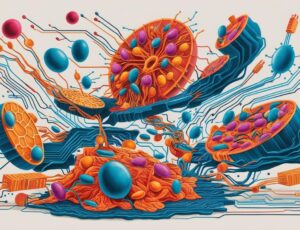The Modern and Postmodern Augustine. Aspects of His Reception from 1600 to 2000
Year Group 2008/09
About the topic
Our theme group consisted of nine members from the disciplines Classics, Systematic Theology, History of Dogmatics, Church History, Theological Ethics, Political Studies, English Literatures, Early Modern History and Neo-Latin. The group met twice to three times per month to discuss both samples of the work of individuals and also general topics of relevance to the overall interest of the theme group to explore general patterns of reception and the functioning of authority through the ages, focusing mainly on the case study of Augustine. The group’s interdisciplinary focus helped to widen the range of material taken into account beyond the more traditional confinements of theology while at the same time preserving the expertise needed to do this in a scholarly responsible way. This was further helped by the invitation of four NIAS fellows and 20 external academics which took part in the theme group meetings and/or common lunches to contribute to problems raised.
Topics dealt with by individuals included the reception of Augustine in the theologians Adolf von Harnack and Oepke Noordmans (where also the interaction between German and Dutch theology at the turn of the 19th/20th century was taken into account), the transformation of the powerful concept of divine grace through the centuries where Augustine as doctor gratiae has been often invoked but was not quite as influential as was nevertheless claimed, but often de fact eclipsed by Thomas Aquinas. Besides several theological topics (Petrus Canisius and Augustine, Joseph Ratzinger/Benedict XVI and Augustine, Jean-Luc Marion and Augustine) one member in particular dealt with Augustine beyond theology, namely in Gibbons, Coetzee and the genre of autobiography at large, where we got support from another NIAS fellow who was not part of our theme group. Of the more general topics the theme group worked on together we shall only mention an improved understanding of the kind of ‘reception’ we had in mind as the foundational common denominator for all our work in order to make it compatible despite its disparity (again two NIAS fellows from outside the theme group were most helpful), the heavily contextualized and ideologised notion of Augustinism/Augustinanism, a term not helpful for the goals of this project, as well as the functions and purposes of the usage of an iconic authority in general. Here the external guests were also a great asset.
Moreover, the theme group organized three workshops at NIAS, one for postgraduates working on Augustine and his reception who had the opportunity to present their research in exchange with more established experts. The second one was a collaboration with the other theme group present at NIAS and dealt with the reception of Augustine in media other than the book (narrowly conceived); the third one aimed at a first synthesis of the most ambitious aim of the theme group, namely general pattern of the reception of Augustine through the ages, with the particular focus on the fragility and flexibility of his authority. The results of the two latter meetings will be published.
Themegroup participants
-

Baumgartner, Chr.
Year Group 2008/09 -

Lambert, D.R.
Year Group 2008/09 -

Liebregts, P.T.M.G.
Year Group 2008/09 -

Pollmann, K.F.L.
Year Group 2008/09



